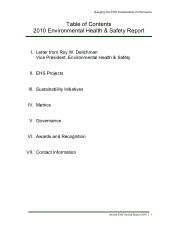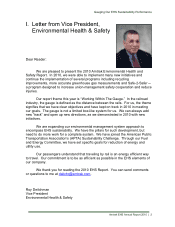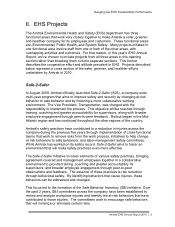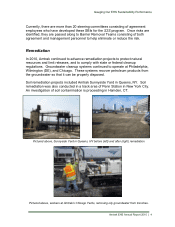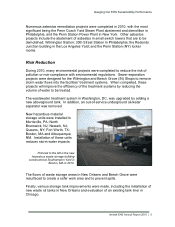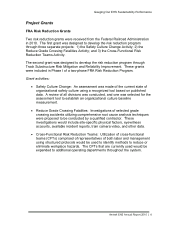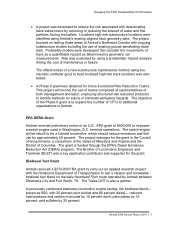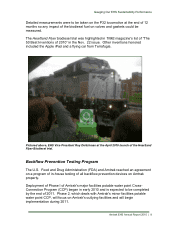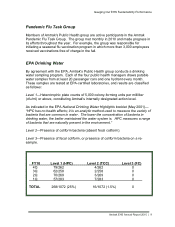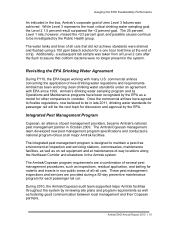Amtrak 2010 Annual Report Download - page 12
Download and view the complete annual report
Please find page 12 of the 2010 Amtrak annual report below. You can navigate through the pages in the report by either clicking on the pages listed below, or by using the keyword search tool below to find specific information within the annual report.
Gauging Our EHS Sustainability Performance
Amtrak EHS Annual Report 2010 | 11
Additionally, due to the emergence of bed bugs and other biting insects in the
lodging and transportation industries, the Amtrak/Copesan management team has
developed and implemented proactive strategies for the inspection and treatment
for insects, as well as a monitoring protocol designed to mitigate the risks
associated with these pests. Along with the strategies outlined, the
Amtrak/Copesan team is continually evaluating new technologies, such as
monitors, K-9 inspection, and heat treatment of rail cars. As new monitoring and
control methods are proven, they may be added to the program.
Cross-Functional Safety Teams
During the past four years, 26 independent employee-management cross-function
teams (CFTs) have been established throughout the Amtrak system to help create
a safer workplace. The program is now supplemented by an FRA grant.
Teams are established after an inventory of work activities is created and a specific
task or process to be analyzed based on perceived risk is selected. Next, team
members identify potential hazards and concerns and evaluate the overall
effectiveness of existing control measures.
The program goal for the team is to develop and implement a corrective action
plan that recognizes engineering, training and education, and behavioral
components.
New control measures undergo a second system analysis to evaluate their
effectiveness, and all proposed solutions and progress metrics are summarized in
an action plan that identifies the person responsible and a timetable for execution.
Any risk reduction ideas identified during the process that are beyond the scope of
the team are recorded and forwarded to the appropriate group for consideration.
A sampling of CFT projects and activities follows.
Wilmington Shops
At the Wilmington Shops, a CFT re-engineered procedures required to slide out
the battery drawer located beneath AEM-7 locomotives in order to change or
service batteries. Pulling out the drawer sometimes requires two or three
employees due to the overall weight and the difficulty of sliding the drawer on
tracks that are now more than 28 years old. To address this awkward and
physically demanding task, the team created a design for another type of jig that
attaches to a forklift to facilitate the sliding of the drawer. Once the device is
fabricated, the team will draft formal work procedures and develop a companion
training module.


